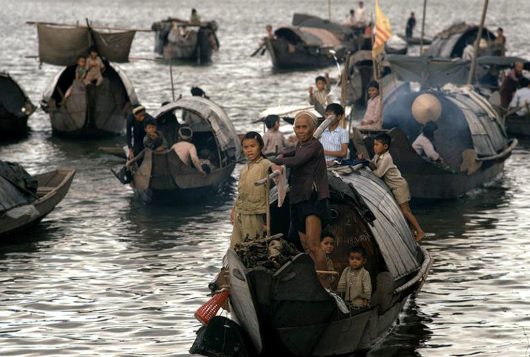Ten Deadly Wars

There is sufficient evidence to suggest that war causes and exacerbates poverty. It results in damage to infrastructure, breaks up communities and leads to the injury and death of countless people. Here is a list of 10 deadly wars that did just that:
- Second Congo War — 5.4 million deaths. It began in 1998, in the Democratic Republic of the Congo (DRC), and it lasted until 2003. Eight other African nations were drawn into the fight, and the cause included local disputes over land and resources. It also claimed the life of DRC President Laurent-Desire Kabila in 2001.
- Iran-Iraq War — 1.5 million deaths. In September 1980, Iraq invaded Khuzestan and Iran under Saddam Hussein’s dictatorship. This deadly war lasted nearly eight years. It ended in July 1988, after U.N. Resolution 598 was accepted. However, this resolution was not reached before many casualties and billions of dollars in damages.
- Vietnam War — 3 million + deaths. This war began in 1954 but did not end until 1975. It involved North Vietnam and its southern allies, the Viet Cong, fighting against South Vietnam and the United States. North Vietnam wanted to unite the whole country under a communist regime, and in 1976 they succeeded when the country was officially united as the Socialist Republic of Vietnam.
- World War II — 56.4 million deaths. Known as the deadliest war in history, World War II began in 1939 with Germany’s invasion of Poland, under the leadership of Adolf Hitler. It was a conflict that involved nearly every part of the world, until its end six deadly years later in September 1945.
- Second Sino-Japanese War — nearly 22 million deaths. The largest Asian war in the twentieth century was fought between the Republic of China and the Empire of Japan. It began in 1937, and ended in 1945 when Japan surrendered, shortly after an atomic bomb was dropped on Hiroshima by the United States.
- Chinese Civil War — 6 million deaths. This war started in 1927 when the Shanghai Massacre occurred, along with the collapse of the First United Front. In reality, the war ended in 1949 when the Chinese Communist Party was victorious in gaining control. However, because there was never a peace treaty signed, this war technically still continues today.
- Russian Civil War — 9.5 million deaths. A war that began in 1917 and ended in 1920, it consisted of the Red Army, fighting for the Bolsheviks, against the White Army, who were Anti-Bolshevik. The Bolsheviks was a communist political party, led by Vladimir Lenin.
- World War I — 35 million + deaths. A war centered in Europe, beginning in 1914 and ending in 1918. It was essentially Germany, Austria-Hungary and the Ottoman Empire (the Central Powers), against Great Britain, France, Russia, Italy and Japan (the Allied Powers). The United States joined the Allied Powers after 1917. At the time, it was thought to be the war to end all wars.
- Dungan Revolt — 8 to 10 million deaths. This religious war, which began in 1862 and lasted until 1877, took place in China. It was between the Hui people, who were primarily Muslim, and the Han people, an ethnic group native to East Asia. Actions from the generals of the Qing Dynasty brought the war to an end, without any real resolution to the conflict that started it.
- Taiping Rebellion — 20 million deaths. The Taiping Rebellion was started in 1850 by Hong Xiuquan, a man claiming to be the younger brother of Jesus Christ who said he had been sent to reform China. The rebellion ended in 1864, when the central government in China finally defeated Hong Xiuquan and his followers.
According to the World Development Report 2011: Conflict, Security and Development, “interstate and civil wars have declined since peaking in the early 1990s.” However, one in four people in this world still, “live in fragile and conflict-affected states or in countries with very high levels of criminal violence.” The 10 deadly wars listed here are an important part of history, but modern violence does not always come in the form of a typical war. Its consequences, though, are very much the same. It is essential for world leaders to recognize this change so they may effectively deal with the problem.
– Kristin Westad
Photo: Flickr
